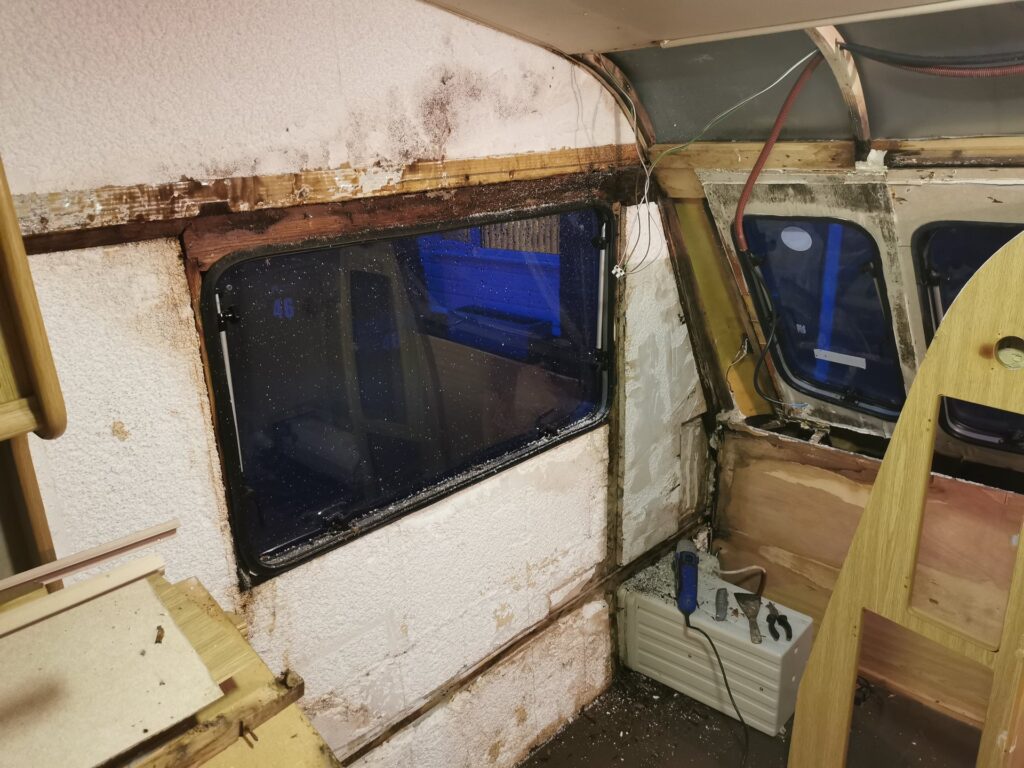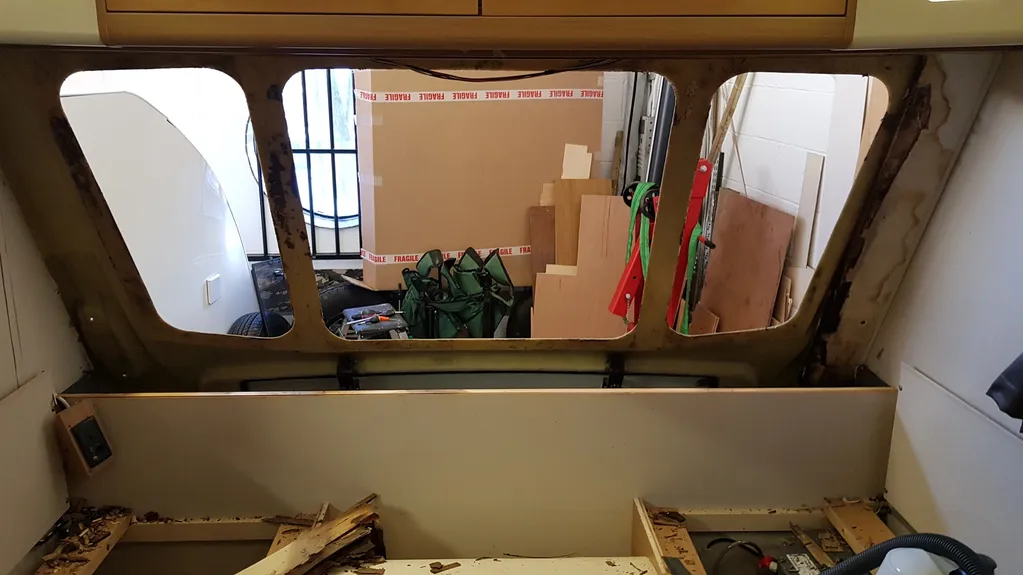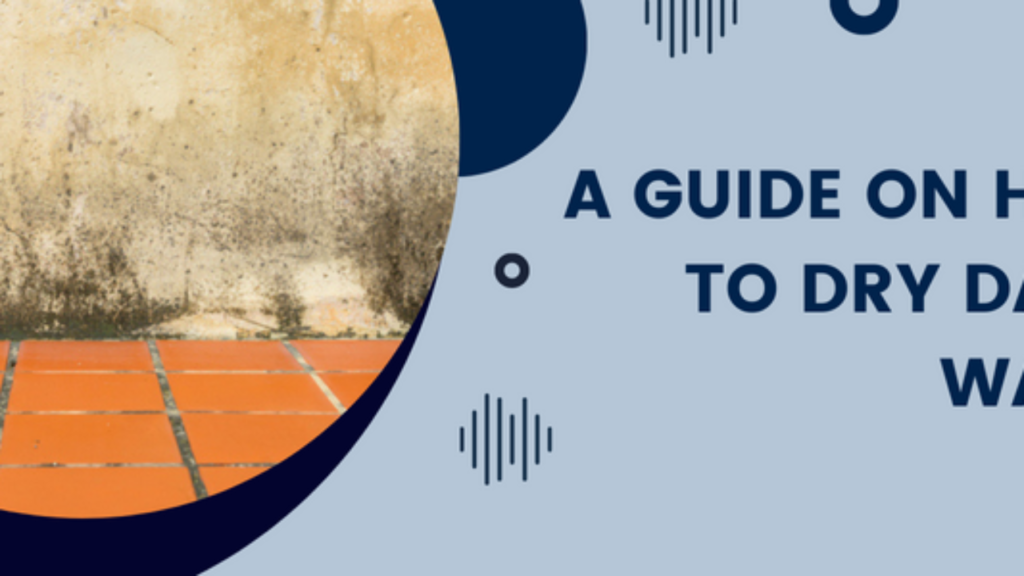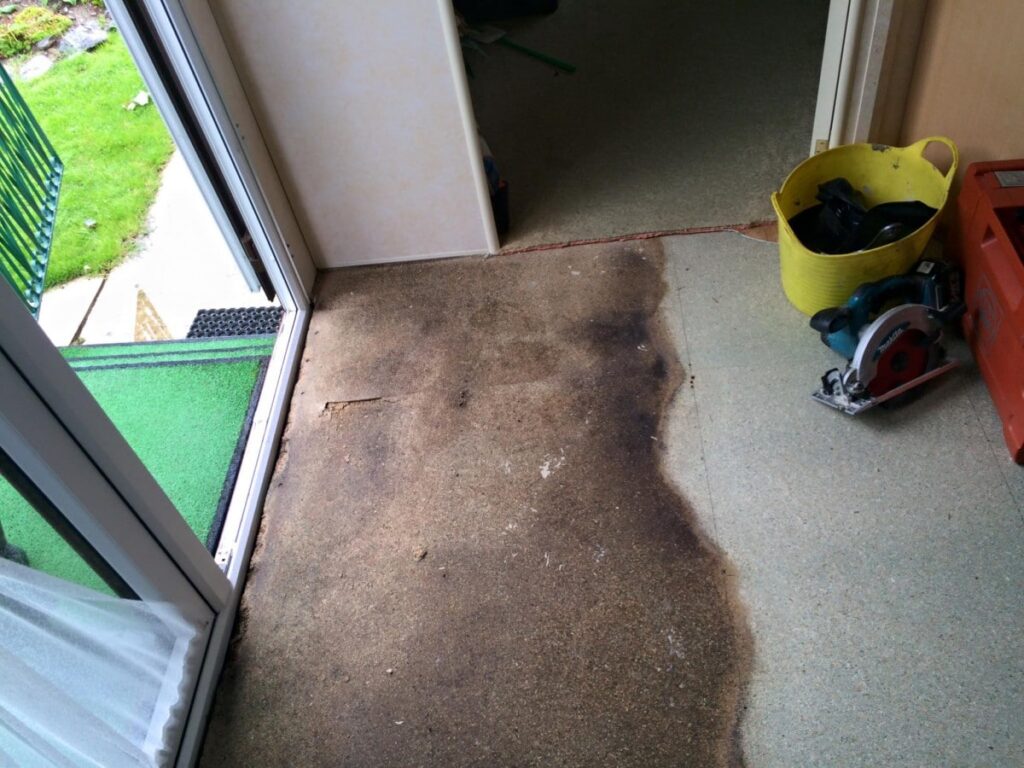Introduction to Caravan Damp:
Explanation of What Caravan Damp Is: Caravan damp is a common issue faced by caravan owners, and it refers to the unwanted moisture that accumulates within the caravan. This moisture can come from a variety of sources, including condensation, leaks from the outside, or rising damp from the ground. The presence of damp in a caravan can lead to a host of problems, including mold, mildew, and damage to the caravan’s interior and structure.
Different Types of Damp:
There are mainly three types of damp that can affect a caravan: condensation, penetrating damp, and rising damp. Condensation is caused by moist air condensing on cold surfaces within the caravan. Penetrating damp occurs when water leaks into the caravan from the outside, often through gaps or cracks in the caravan’s exterior. Rising damp happens when moisture from the ground rises up into the caravan, and it is less common in caravans compared to buildings.

Causes of Caravan Damp:
Discuss the Various Causes of Damp in Caravans: The causes of caravan damp are varied and can include issues such as poor ventilation, leaks from external sources, and condensation from daily activities like cooking and showering. External leaks can be due to faulty seals, cracks, or damage to the caravan’s exterior. Poor ventilation exacerbates damp issues by allowing moist air to accumulate inside the caravan, leading to condensation.

Effects of Damp on Caravans:
How Damp Can Damage the Caravan Structure and Interior: Damp in caravans can cause significant damage to both the structure and interior. The moisture can weaken the caravan’s frame, cause the walls and floor to rot, and damage the insulation. Over time, untreated damp can lead to costly repairs and make the caravan unsafe for use.
Assessing Damp in Caravans:
How to Identify and Assess the Extent of Damp in a Caravan: Identifying and assessing the extent of damp in a caravan is a crucial step in addressing the issue. Caravan owners can look for visible signs of damp, such as water stains, mold, and a musty smell. Additionally, using a damp meter can provide a more accurate assessment of the moisture levels in different parts of the caravan.

Will Caravan Damp Dry Out on Its Own?
Analyzing the Possibility of Damp Drying Out Naturally: The possibility of caravan damp drying out naturally depends on various factors including the source and extent of the damp, and the weather conditions. In some cases, minor damp caused by condensation may dry out if the weather is warm and dry, and the caravan is well-ventilated. However, relying on this is not a practical or reliable solution for damp issues.
Methods to Dry Out Caravan Damp:
Detailed Guide on Various Methods to Dry Out Damp in Caravans: There are several effective methods to dry out damp in caravans. One common approach is using dehumidifiers, which extract moisture from the air, helping to dry out the interior of the caravan. Proper ventilation is also crucial; ensure that all windows and vents are open to allow moisture-laden air to escape. Additionally, repairing any leaks or damage to the caravan’s exterior will prevent further water ingress, aiding in the drying process.

Preventing Damp in Caravans:
Tips and Strategies for Preventing Damp in Caravans: Preventing damp is crucial for maintaining the longevity and usability of your caravan. Regular maintenance checks can help identify and fix potential issues before they escalate. Ensure that the caravan is adequately sealed and insulated to prevent water ingress and condensation. Additionally, using moisture-absorbing materials and ensuring good ventilation can help in keeping the caravan dry.

Case Studies/Real-Life Examples:
Include Case Studies or Real-Life Examples of Caravan Damp Issues and Solutions: Including case studies or real-life examples in your article can provide readers with practical insights into dealing with caravan damp. Sharing experiences of caravan owners who have successfully dealt with damp issues, outlining the challenges they faced, the solutions they implemented, and the results they achieved, can offer valuable perspectives and lessons to your readers.
Conclusion:
Summarize the Key Points Discussed in the Article: In the conclusion section of your article, summarize the key points discussed, providing a concise overview of caravan damp, its causes, effects, assessment, and solutions. Reiterate the importance of addressing damp issues promptly to prevent damage to the caravan and health risks to individuals.
Provide a Final Thought or Recommendation for Caravan Owners Dealing with Damp: Offer a final thought or recommendation, encouraging caravan owners to be vigilant about preventing and addressing damp in their caravans. Highlight the significance of regular maintenance, timely repairs, and employing effective methods to dry out and prevent damp to ensure the longevity and safety of their caravans.
Additional Resources:
Provide Links or References to Additional Resources Related to Caravan Damp Issues: In the additional resources section, provide links or references to further reading, videos, forums, or organizations related to caravan damp issues. This can be a valuable resource for readers seeking more information, guidance, or support in dealing with caravan damp issues.
Additional Resources for Further Reading and Support: Offer a list of books, websites, forums, and organizations that provide comprehensive information, expert advice, and community support for caravan owners facing damp issues. Providing these resources can help readers gain a deeper understanding of caravan damp and equip them with the knowledge and tools to effectively address and prevent damp in their caravans.



